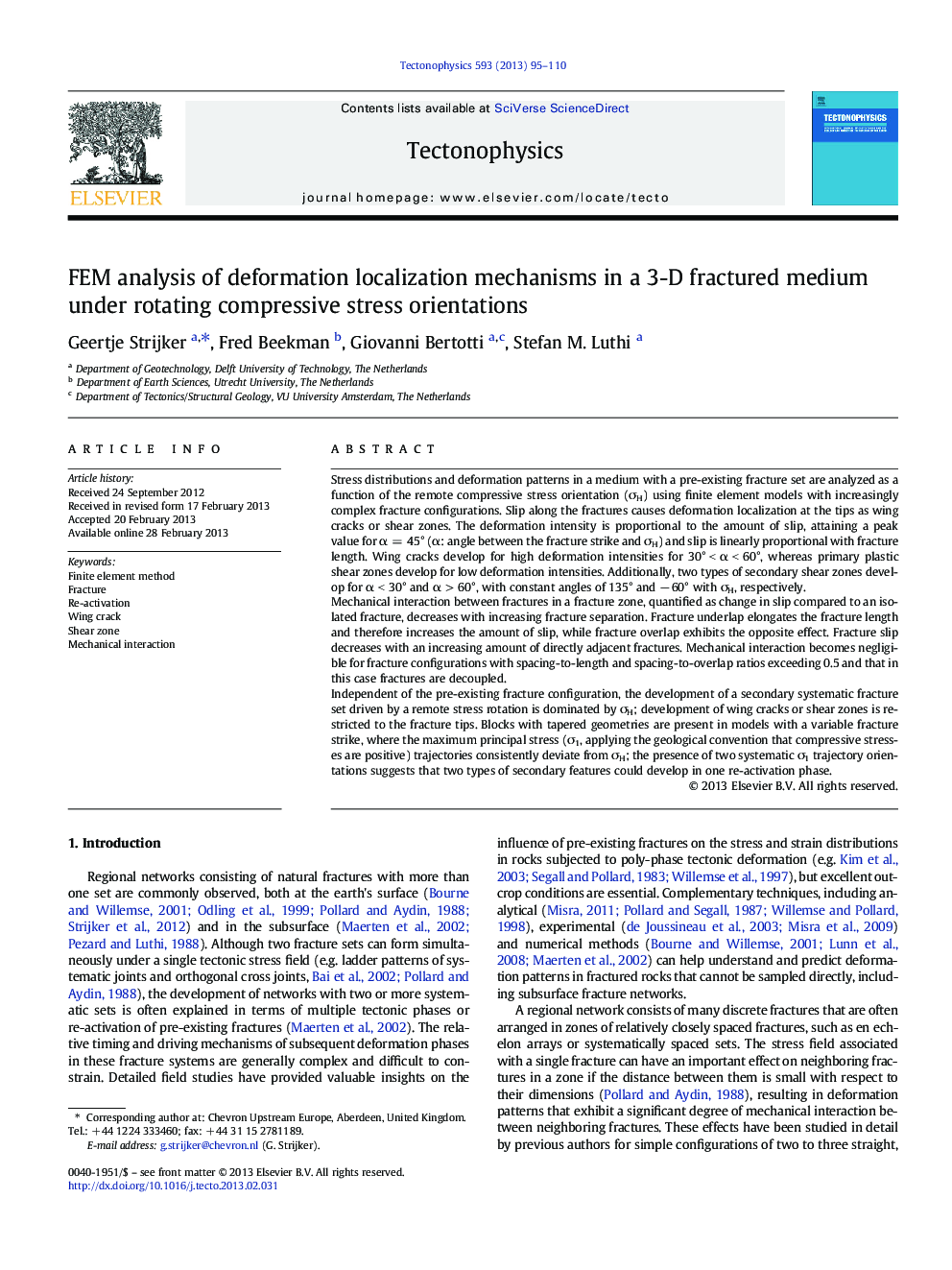| کد مقاله | کد نشریه | سال انتشار | مقاله انگلیسی | نسخه تمام متن |
|---|---|---|---|---|
| 4692319 | 1636792 | 2013 | 16 صفحه PDF | دانلود رایگان |

Stress distributions and deformation patterns in a medium with a pre-existing fracture set are analyzed as a function of the remote compressive stress orientation (σH) using finite element models with increasingly complex fracture configurations. Slip along the fractures causes deformation localization at the tips as wing cracks or shear zones. The deformation intensity is proportional to the amount of slip, attaining a peak value for α = 45° (α: angle between the fracture strike and σH) and slip is linearly proportional with fracture length. Wing cracks develop for high deformation intensities for 30° < α < 60°, whereas primary plastic shear zones develop for low deformation intensities. Additionally, two types of secondary shear zones develop for α < 30° and α > 60°, with constant angles of 135° and − 60° with σH, respectively.Mechanical interaction between fractures in a fracture zone, quantified as change in slip compared to an isolated fracture, decreases with increasing fracture separation. Fracture underlap elongates the fracture length and therefore increases the amount of slip, while fracture overlap exhibits the opposite effect. Fracture slip decreases with an increasing amount of directly adjacent fractures. Mechanical interaction becomes negligible for fracture configurations with spacing-to-length and spacing-to-overlap ratios exceeding 0.5 and that in this case fractures are decoupled.Independent of the pre-existing fracture configuration, the development of a secondary systematic fracture set driven by a remote stress rotation is dominated by σH; development of wing cracks or shear zones is restricted to the fracture tips. Blocks with tapered geometries are present in models with a variable fracture strike, where the maximum principal stress (σ1, applying the geological convention that compressive stresses are positive) trajectories consistently deviate from σH; the presence of two systematic σ1 trajectory orientations suggests that two types of secondary features could develop in one re-activation phase.
► Deformation localization is investigated in a fractured medium under stress rotation.
► Four FE models with fracture configurations of increasing complexity are tested.
► Deformation intensity at the tips is proportional to the slip on the fracture planes.
► Mechanical interaction decreases with increasing fracture separation.
► Two secondary orientations can develop simultaneously for irregular model geometries.
Journal: Tectonophysics - Volume 593, 8 May 2013, Pages 95–110